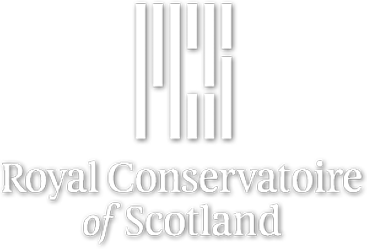A Historical Approach to Studying Traditional Music: Valuing Older Collections
Research output: Contributions to conferences › Paper › peer-review
Contributors
About
This paper was given at the 2016 ISME (International Society for Music Education) Conference in July 2016, Glasgow.
Theoretical/Pedagogical Background:-
This paper arises from my own approach to the historic Scottish song and fiddle collections that have been the focus of my doctoral and postdoctoral research; my concern that music performers should develop an understanding of the historical context in which repertoire originated; and my studies for a credit-bearing short course at the Royal Conservatoire of Scotland, ‘The Teaching Artist’.
Aim/focus of work/research reported:-
I have had opportunities to teach undergraduates about early collections of Scottish traditional music, to increase their awareness of key resources and their place in the historical canon. Whilst today’s performers may do no more than plunder these collections for appealing tunes, or lyrics telling a poignant story, their history gives students deeper insight into what the material meant to earlier generations; and provides them with a source of interesting anecdotes for future use.
Students learn to search for library resources and to examine unfamiliar older material, whilst the treasured rare collections get increased exposure and appreciation.
Method/approach of the work:-
Taking a constructivist approach to teaching, and striving for experiential learning, I prefer to introduce one or two typical collections, and then to encourage students to interrogate these early sources by close examination of the music and its paratextual material, ie by studying the title page, dedication or contextual notes, and the form of musical presentation. Students are tasked with presenting their findings to the rest of the class, highlighting interesting features.
Results and/or summary of main ideas:-
Students remark upon many features, depending on the collections they examined. The presence and nature of accompaniment (or its absence); commentary in the preface about the method of compilation or approach to performance; attitudes to authenticity; notes relating to particular pieces; or even something as comparatively old-fashioned as sol-fa notation all prompt observations about the volumes’ compilation and intended audiences. Researching the material and devising a presentation promotes deeper engagement with this historical material.
Conclusions and implications for music education:-
Taking a historical approach to traditional music counterbalances to students’ preparation for a career in the performing arts, by enriching their understanding of how the repertoire developed; learning how to research and interrogate the sources; and sharing their findings.
They also gain insight into the value of library collections that have been built up over the years, and a readiness to spend time with older resources that are a little harder to understand than today’s.
Theoretical/Pedagogical Background:-
This paper arises from my own approach to the historic Scottish song and fiddle collections that have been the focus of my doctoral and postdoctoral research; my concern that music performers should develop an understanding of the historical context in which repertoire originated; and my studies for a credit-bearing short course at the Royal Conservatoire of Scotland, ‘The Teaching Artist’.
Aim/focus of work/research reported:-
I have had opportunities to teach undergraduates about early collections of Scottish traditional music, to increase their awareness of key resources and their place in the historical canon. Whilst today’s performers may do no more than plunder these collections for appealing tunes, or lyrics telling a poignant story, their history gives students deeper insight into what the material meant to earlier generations; and provides them with a source of interesting anecdotes for future use.
Students learn to search for library resources and to examine unfamiliar older material, whilst the treasured rare collections get increased exposure and appreciation.
Method/approach of the work:-
Taking a constructivist approach to teaching, and striving for experiential learning, I prefer to introduce one or two typical collections, and then to encourage students to interrogate these early sources by close examination of the music and its paratextual material, ie by studying the title page, dedication or contextual notes, and the form of musical presentation. Students are tasked with presenting their findings to the rest of the class, highlighting interesting features.
Results and/or summary of main ideas:-
Students remark upon many features, depending on the collections they examined. The presence and nature of accompaniment (or its absence); commentary in the preface about the method of compilation or approach to performance; attitudes to authenticity; notes relating to particular pieces; or even something as comparatively old-fashioned as sol-fa notation all prompt observations about the volumes’ compilation and intended audiences. Researching the material and devising a presentation promotes deeper engagement with this historical material.
Conclusions and implications for music education:-
Taking a historical approach to traditional music counterbalances to students’ preparation for a career in the performing arts, by enriching their understanding of how the repertoire developed; learning how to research and interrogate the sources; and sharing their findings.
They also gain insight into the value of library collections that have been built up over the years, and a readiness to spend time with older resources that are a little harder to understand than today’s.
Details
| Original language | English |
|---|---|
| Publication status | Published or Performed - 29 Jul 2016 |
Author keywords
Keywords
- Pedagogy, Musicology, Book history, Teaching
